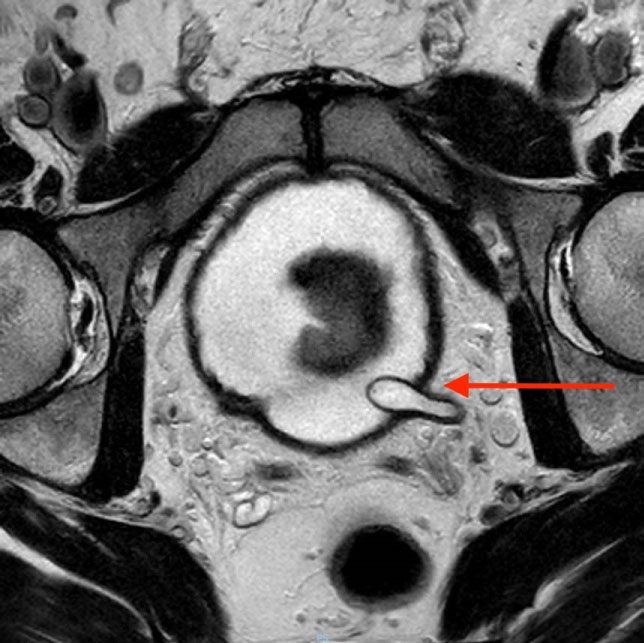What does the cobra-head sign or spring onion sign indicate on imaging studies of the urinary tract?
Cobra-head sign or spring onion sign is due to the dilation of the distal ureter in adults or the signs of adult-onset ureterocele.
On imaging, a ureterocele appears as an intra-vesicular globular defect surrounded by a thin, well defined, radiolucent line resembling the “cobra-head,” hence the name. This sign usually indicates an uncomplicated ureterocele.
Usually, ureterocele is present congenitally and identified in the pediatric age group, but quite seldom, there are cases of ureterocele in the adult age group too that are identified incidentally. Here is a case presentation of a 62-year-old man who was referred to the urology clinic with the laboratory report showing high levels of prostate-specific antigen (PSA) of 10 ug/l.
History revealed no symptoms or signs suggestive of urinary infection, although he had mild lower urinary tract symptoms.
On examination, there were no remarkable findings. The digital rectal examination was normal too.
According to the latest National Institute for Health and Care Excellence (NICE), magnetic resonance imaging in the prostate was performed, which showed a Prostate Imaging Reporting and Data System (PI-RADS) 3 lesion in the anterior part of his prostate. There was another finding which was identified incidentally. A left ureterocele was found, classically representing the cobra sign or the spring onion sign (Figure 1).

A template biopsy of his prostate was performed. On the histopathological evaluation of the biopsy sample, there were no signs of malignancy is any of his 43 prostate biopsy cores samples.
The local multidisciplinary team decided to monitor his PSA in the community, whereas the left ureterocele was left untreated without any further investigations as it was producing no symptoms.
The radiolucent line of the cobra-head should remain thin and well-defined. Any change, irregularity, thickening, or any asymmetry that may develop in this line should be further investigated.
References
Phan YC, Mahmalji W (2019) Cobra Head Sign. Clin Med Img Lib 5:133. doi.org/10.23937/2474-3682/1510133
Shokeir AA, Nijman RJ (2002) Ureterocele: An ongoing challenge in infancy and childhood. BJU Int 90: 777-783.




